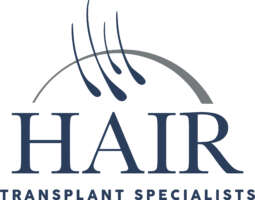MEDICAL THERAPY TO HELP MAINTAIN YOUR EXISTING HAIR AND PREVENT FUTURE HAIR LOSS
HERE AT HAIR TRANSPLANT SPECIALISTS WE WANT TO PERMANENTLY RESTORE THE HAIR THAT YOU HAVE LOST AND HELP YOU MAINTAIN THAT HAIR THAT YOU STILL HAVE. THIS CAN BE ACCOMPLISHED IN SEVERAL WAYS. THESE ARE THE FDA APPROVED METHODS. THE GOAL IN HAIR PRESERVATION IS TO MAINTAIN YOUR EXISTING HAIR BEFORE THE HAIR FOLLICLES DIE OFF.
PROPECIA & AVODART
PROPECIA® (GENERIC NAME: FINASTERIDE)
Propecia is a 1mg oral tablet taken daily and acts as a potent 5 alpha-reductase type-2 inhibitor. It blocks the conversion of testosterone to Dihydrotestosterone and decreases levels of DHT by about 65 percent. It is the most effective of all the medications and has shown impressive effects in both stopping or slowing further hair loss, as well as producing re-growth. The effects are greatest on the crown however it also has beneficial effects in the frontal area as well. Five-year results showed over 85% of men stabilized or improved.
PROPECIA IN WOMEN:
Propecia not officially FDA approved for use in women and is contraindicated in women of the child-bearing age because of possible birth abnormalities that could occur to the fetus. However there have been studies that suggest Finasteride may have some beneficial in both pre and postmenopausal women. Due to these reports Propecia has been used off label for hair loss in women. When used in women of childbearing age the physician is taking a medical/legal risk, and at a minimum need to make sure the patient is on birth control.
POTENTIAL PROPECIA SIDE EFFECTS
In general, after 25 years of being on the market, the side effects profile of finasteride is felt to be very low. In men the most common concerns are sexual side effects, gynecomastia and decreased semen volume. Numerous double-blind studies have shown the overall incidence of sexual side effects to be very low at less than 4.5% and reversible when stopped.
However, recent concerns have been raised on the internet over anecdotal reports of more permanent sexual side effects as well as other symptoms collectively called “Post Finasteride Syndrome (PFS)”. Whether or not this is a true clinical entity is currently controversial. Studies have been inconclusive and have been interpreted in multiple ways. The difficulty in interpretation is that many of the symptoms (i.e., ED, Depression, etc.) occur quite frequently in the general population and would be more frequent in the population of men having angst over hair loss without the influence of medication. Most physicians do agree that IF it does exist it has to be extremely rare and probably occurs in a small subset of patients with some predisposing factors.
However, PFS has made a big splash in the last few years and both physicians and patients need to be aware of this issue and be able to discuss it. The main decision to be made after an open discussion is whether the almost certain, very positive benefit of improved hair growth and density is worth the very small (but possible) risk of some of the symptoms of PFS.
TOPICAL PROPECIA & LOW DOSE PROPECIA
In attempt to reduce potential side effects of Propecia even further two new approaches have been developed:
Low dose Propecia is the use of 1 mg only 3 times a week instead of 7 days a week. It is found to be almost as effective as oral treatment (70%) with less complaints of side effects.
Topical Propecia: A few pharmacies have developed a topical Propecia that stays in the skin. It has been reported, but unsubstantiated, to have fewer side effects but some side effects do still occur.
AVODART® ( GENERIC NAME DUTASTERIDE)
Avodart is another 5-alpha-reductase inhibitor that blocks both type 1 and 2 versions of the enzyme. The blockade of the type 1 enzyme (in addition to type 2) decreases levels of DHT greater than 90 percent and is felt to be more effective than finasteride. However, it has a very long half-life and the side effect profile is thought to be worse than that of finasteride. It is not released for the treatment of male pattern baldness yet some hair transplant clinics prescribe Avodart off label for patients that are not responsive to finasteride.
ROGAINE
ROGAINE® (GENERIC NAME MINOXIDIL)
Rogaine is a topical medication approved for both men and women. It is currently available as a 2% liquid, 5% liquid, and 5% foam. It is thought to act as a direct anagen-prolonging agent. Although not to the same degree as Finasteride, it is effective in both men and women. Although the packaging inserts state it is for the vertex, it works in both the front and crown.
Personal experience and experience from colleagues suggest that approximately 50% of men have their hair loss slowed or stopped, 20% show some signs of regrowth, and 30% continue to lose hair (i.e., no effect). Rogaine is currently available over the counter (OTC).
Many companies & pharmacies have created shampoos and topical lotions that contain Minoxidil plus other ingredients to combat hair loss. In many of the over-the-counter products that fight hair loss, the main component is Minoxidil. One popular product that patients seem to feel works is Formula 82M. Formula 82M contains 5% Minoxidil, tretinoin, the topical steroid 0.01% fluocinolone, a natural 5-alpha reductase blocking agent, oleanolic acid, and several other ingredients in non-propylene glycol base. Many patients feel it works better with less irritation than over-the-counter Rogaine foam.
To apply Minoxidil solution, simply fill the applicator with the prescribed amount. Then apply the solution evenly to the affected area of the scalp and gently massage the scalp.
POTENTIAL ROGAINE SIDE EFFECTS
A big problem with the use of Minoxidil topical is compliance. In addition to irritation, the original product was oily and messy. The newer 5% foam and the Formula 82m mentioned above contain no propylene glycol, so it is much easier to use and is better accepted by patients. It was recently FDA approved for women as a once-a-day therapy.
Another potential side effect in some women is increased facial hair, but it is uncommon and mild if it occurs. Minoxidil was originally used orally as a blood pressure medication. Therefore, and very rare, it has been reported to cause a slight drop in blood pressure and palpitations. Usually, one would have to be very sensitive or use more than recommended. We advise that you consult a healthcare professional before taking new medications if you have kidney disease, heart disease, or a pre-existing heart condition. You should get immediate medical help if you experience allergic reactions, difficulty breathing, hives, and swelling of your face, lips, tongue, or throat.
ORAL MINOXIDIL
Oral Minoxidil is an option for patients who find the topical form too messy or prefer the pill’s convenience. It has been used in low doses ( 5mg) by Dr. Pathamovich in Thailand for 22 years, with reports of success and minimal side effects.
LOW LEVEL LASER THERAPY (LLLT)
Low-Level Light Therapy or Cold Laser Light Therapy has become very popular over the last 10 years. Its main uses are tissue repair and relief from pain and inflammation. It was controversial and reserved for inconvenient office treatments using larger bulky appliance-sized devices. Over the last few years, many less expensive & in-home treatment laser light devices have been developed.
Several studies have confirmed that consistent use will thicken miniaturized hairs and slow hair loss. In some cases, new hair growth is observed. The results are variable, with some patients getting great results while others getting less impressive results. Still, it is a good adjunct for patients to consider.
This procedure is painless and noninvasive. Typically, a patient needs to use the laser device 3 times a week for only 20-40 minutes. Most devices are in the form of a helmet designed to be worn at home. Still, some options are present as a hat or ball cap, which are battery-powered and designed to be worn outdoors and while running short errands

Platelet Rich Plasma (PRP) For Hair Loss
PRP Therapy is a healthy, preventative, and proactive therapy that utilizes your own platelet rich plasma. PRP is used for many medical and aesthetic treatments, and is an ideal way to combat hair loss. More than 50% of men and women experience thinning hair or a form of baldness by age 50, with signs beginning as early as our 20’s. PRP Therapy is a natural therapy used to stimulate and regenerate healthy new hair growth as well as prevent further hair loss. PRP stimulates undersized or underactive hair follicles and encourages the production of thicker, stronger, and longer strands of hair.
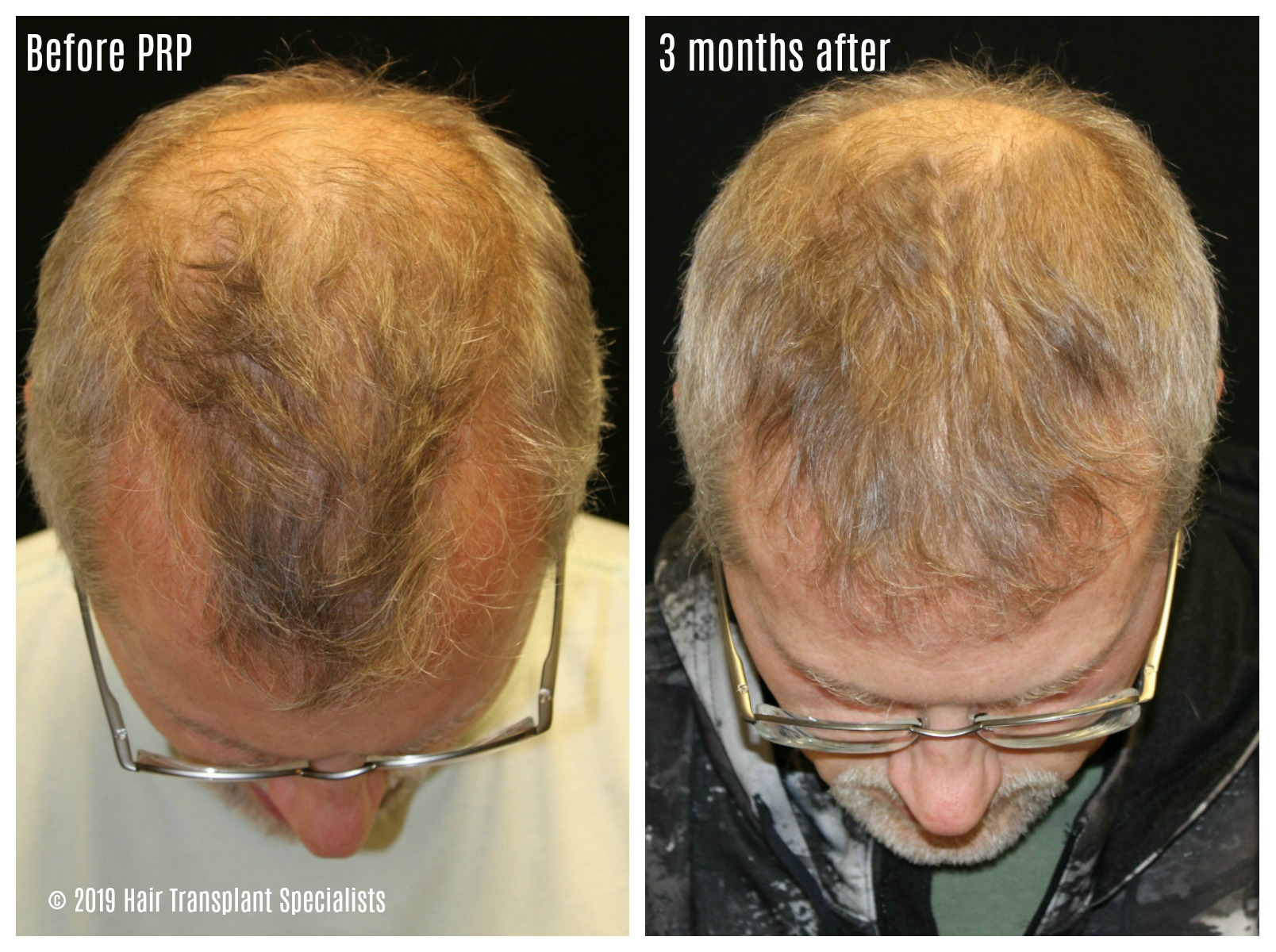
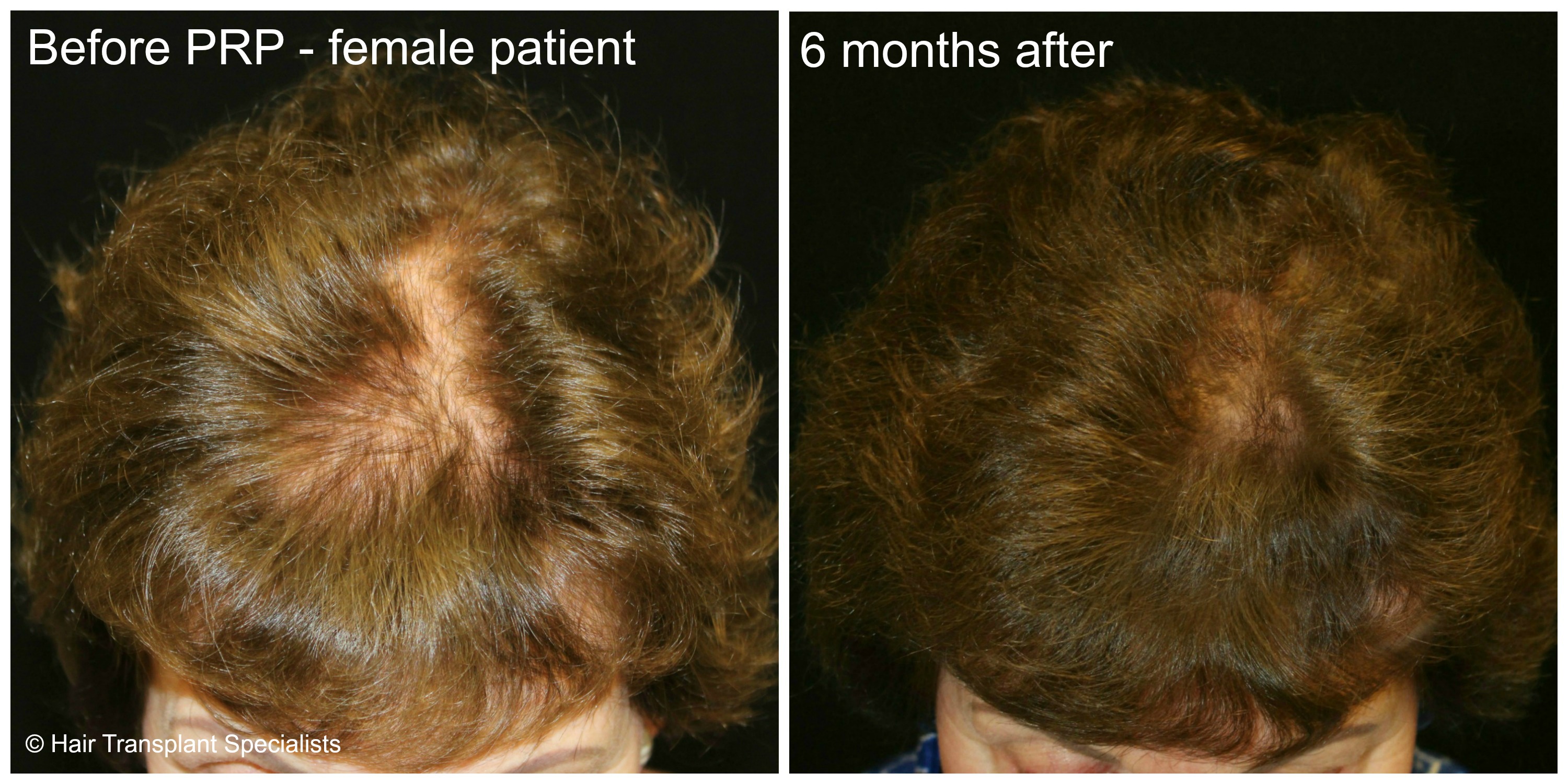
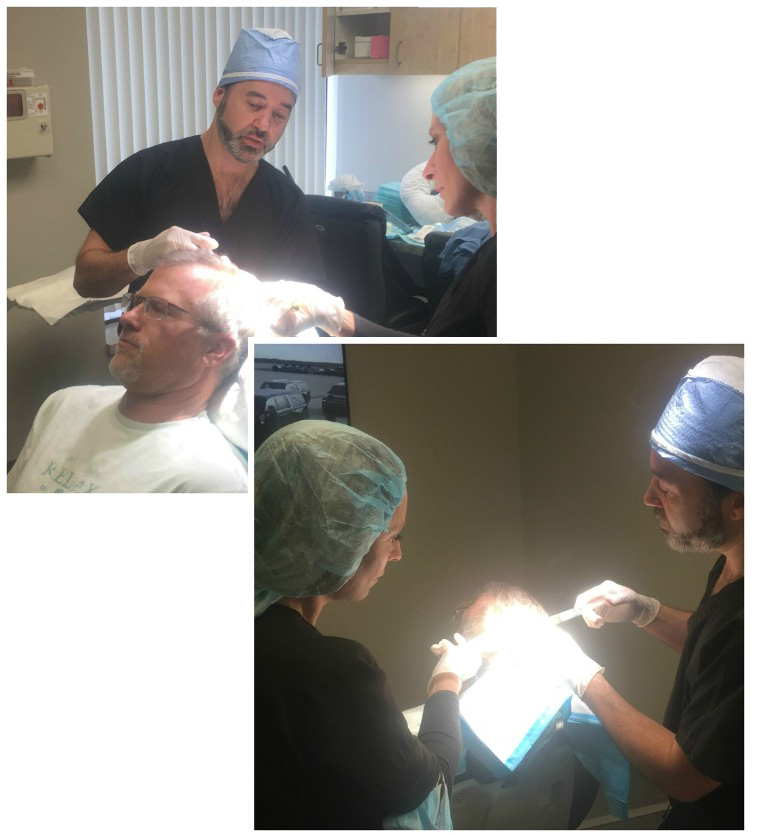
What to expect with PRP Treatment for Hair Loss
This in-office treatment involves a quick blood draw from your arm, and the process of separating the plasma from the red blood cells in a machine called a centrifuge. Once separated, the plasma (PRP) is injected strategically into the scalp where needed (or desired).
- New hair growth
- Thickness of existing hair
- Stronger hair follicles
- Alopecia (male and female pattern baldness): Alopecia is a hereditary and androgen-dependent progressive thinning of the scalp hair in a defined pattern. It is a common disorder, affecting women as well as men.
- Alopecia areata: Spotty areas of baldness or thinning hair, typically the size of a coin.
- Hypotrichosis: Hypotrichosis is fine or reduced hairs of the eyebrows or beard as we age.
- Trichotillomania: Compulsive hair pulling, resulting in thinning or loss of hair on scalp or eyebrows. PRP may strengthen and stimulate the growth of new hair, but will not cure compulsive pulling.
Not All PRP Providers Achieve the Same Results and Here’s Why…
This article discusses the methodological differences between Eclipse PRP and EmCyte PurePRP kits and explains how these differences directly affect PRP potency.
Third Party Analysis of Commercial PRP Kits
Third party analysis was conducted by Robert Mandle, PhD, who lead a team at BioSciences Research Associates (BSR) in 2016 to compare growth factor release and platelet concentration amongst commercially available PRP kits. BSR is an independent contract research laboratory located in Cambridge and once academically affiliated with Harvard Medical School. BSR is currently affiliated with the Immune Disease Institute at Harvard and as such draws from a community of nearly 400 bioscience researchers. The BSR laboratory complies with the Food and Drug Administration’s (FDA) Current Good Manufacturing Practice (cGMP) to assist pharmaceutical and biotech companies in product development and clinical trial support.
This study compares platelet concentration and growth factor release between 5 different PRP kits:
- Emcyte GS30-PurePRP II
- Emcyte GS60-PurePRP II
- Arteriocyte MAGELLAN
- REGENKIT THT Tube
- ECLIPSE PRP
The researchers drew approximately 200 ml of blood from 4 “healthy” donors and recorded the concentration levels of platelets, stromal cell-derived factor 1 (SDF-1α), and platelet derived growth factor (PDGF) in the final serum produced by each PRP kit. Donors were referenced with code numbers. Age, sex and ethnicity were not tracked. Blood was drawn into the presence of an anticoagulant according the manufacturer’s protocol to keep platelets from degranulating during centrifugation. Anticoagulants included sodium citrate, and ACD-A citrate dextrose solution (see anticoagulant table for proportions according to kit).
Anticoagulants Used in Study
| PRP Kit | Anticoagulant | Blood volume |
| Emcyte GS30-PurePRP®II | 5mL Na Citrate | 25 ml |
| Emcyte GS60-PurePRP®II | 10mL Na Citrate | 50 ml |
| Arteriocyte MAGELLAN | 8mL ACD-A | 52 ml |
| REGENKIT®THT Tube | 1mL Citrate | 8 ml |
| ECLIPSE PRP | ≈1mL* | ≈ 9mL |
*material not listed (unknown polymer/anticoagulant mix)
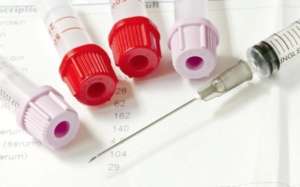
PRP from Dual Centrifugation
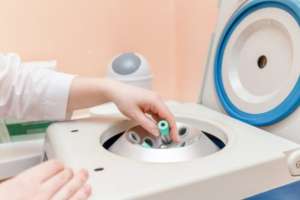
The EmCyte kits produce PRP using a dual centrifugation method, while the Eclipse PRP kits rely on a gel separator to stratify blood elements within a single centrifuge spin. Differential centrifugation stratifies the composition of blood by particle density. Dual centrifugation allows more time for platelets to fall out of suspension from the plasma and creates a finer separation between components of blood. The 30ml and 60ml EmCyte Pure PRP kits produced 4 and 7.4ml of PRP from 25 and 50ml of blood respectively.
Gel Separators and PRP
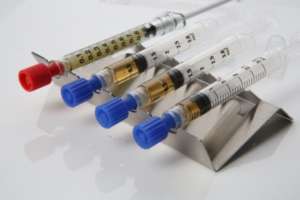
The 11ml Eclipse kit yields 7 ml of platelet poor plasma (PPP) from 9 ml of blood with a gel separator. Gel separators utilize a polymer to stratify blood components. The soluble polymer has a specific density between pure PRP and the heavier blood elements that are generally excluded such as red and white blood cells. During centrifugation, the polymer creates a physical barrier between PPP and the heavier blood elements. This gel-based separation method is very effective at isolating red blood cells, producing a plasma serum with low hematocrit levels. Though red blood cells are effectively isolated, platelet concentration actually declines from whole blood levels, because the gel polymer can only target platelets of a specific density. In actuality, individual platelet density falls along a wide spectrum, so many of the platelets are left behind.
A “PRP” Kit that Produces PPP?
This study shows that Eclipse PRP kits produce platelet poor plasma (PPP) – a serum with half the concentration of platelets as the patient’s whole blood (0.5x). The term platelet “rich” plasma can only be used to refer to plasma serums that have platelet concentration levels that are higher than those found in the patient’s whole blood. EmCyte kits produced a PRP that has platelet concentration levels 6.7 times higher than the patient’s whole blood.
Platelet Concentration Levels
(above blood baseline)
| PRP Kit | Platelet Concentration |
| Emcyte GS30-PurePRP®II | 6.6x |
| Emcyte GS60-PurePRP®II | 6.7x |
| Arteriocyte MAGELLAN | 5.7x |
| REGENKIT® THT | 0.7x |
| ECLIPSE PRP | 0.5x |
Hematocrit levels in Eclipse and EmCyte PurePRP
Hematocrit refers to the ratio of the volume of red blood cells in the total volume of blood. Excessive hematocrit levels have been linked to pain and bruising at the injection site. Though the Eclipse gel strategy fails to effectively concentrate platelets, the polymer substance completely eliminates red blood cells from the final product. Researchers found 0% hematocrit levels in the PPP produced by Eclipse kits and 1.1% hematocrit levels in the PRP produced by EmCyte kits. In a dual spin system, final hematocrit levels vary depending on how carefully the serum is prepared.
While platelet concentration and growth factor release vary from person to person, third party research has confirmed that the Eclipse PRP kits fail to produce PRP. Eclipse kits produce an injectable PPP serum with platelet levels below that of the patient’s blood baseline. On the other hand, using a dual centrifugation method, EmCyte’s PurePRP kits effectively produce PRP with platelet concentration levels 6.7 times higher than those found in the patient’s whole blood.
References
- Mandel R. Research Study: Comparisons of Emcyte GS30-PurePRP II, EmCyte GS60-PurePRP II, Arteriocyte Magellan, Stryker REGENKIT THT, and ECLIPSE PRP. Biosciences Research Associates. 2016; May.[pdf]
- After the treatment, your scalp will be slightly pink with a sunburn appearance. Your scalp may be slightly tender and there may be bruising to the scalp for several days.
- Do not wash hair for 24 hours after a PRP for Hair Loss treatment
- No swimming for 48 hours post PRP treatment
- Do not exercise for 48 hours post treatment
- No dry shampoo, gel, sprays or any products to hair for 24 hours post treatment
- To learn more, schedule a consultation.
- Our providers will help answer questions and determine the best treatment plan for you, including the number of treatments recommended.
- If you develop a fever, cold, flu, or develop a cold sore, blemish, or rash, etc. in the area to be treated prior to your appointment, you must reschedule your appointment.
- It is recommended that if you have a special event or vacation coming up, you should schedule your treatment at least 2 weeks in advance.
- If you are being treated in the lip area and have a history of Herpes (cold sores) with outbreaks more than 2 times a year, you will need to be pre treated with antiviral medication. We recommend Valtrex 2gm the day before or the morning of the treatment followed by another 2gm 12 hours after the first dose. Please let us know if you need a prescription if you do not have the medication on hand.
- Discontinue the use of anti-inflammatory agents (NSAIDs) such as Advil, Aleve, Aspirin, Ibuprofen, Motrin, Naprosyn, etc., at least 1 week before your treatment. One of the purposes of PRP is to induce inflammation and these medications limit or prevent inflammation. You may take Tylenol or other Acetaminophen-containing products as directed.
- Discontinue the use of any blood thinning agents such as Vitamin A, Vitamin E, Gingko Biloba, Garlic, Flax Oil, Cod Liver, Essential Fatty Acids (EPA, DHA),etc., for at least 1 week before treatment to minimize bruising and bleeding.
- You will not be able to undergo a treatment if you are or have been on systemic corticosteroids (Prednisone, Methylprednisolone, etc.) within 2 weeks of treatment. Consult your provider for approval to discontinue use of corticosteroids for this procedure.
- It is recommended that you avoid alcohol, caffeine, niacin, spicy foods, and cigarettes 3 days before your treatment as these products may increase the risk of bleeding.
- Maintain a healthy diet and drink at least 64 oz. of water the day before and the day of the treatment. It is important to be well hydrated, as you will be giving blood.
- Maintain a healthy diet and drink at least 64 oz. of water the day before and the day of the treatment. It is important to be well hydrated, as you will be giving blood.
- After the treatment, your skin will be slightly pink and feel slightly sunburned. For most people, your skin will completely recover in 24-72 hours.
- Your body’s collagen production usually takes about 4-8 weeks, so you will continue to see improvements over this time.
- No makeup to area of treatment for at least 24 hours post micro needling with PRP.
- Apply CeraVe moisturizer to area of treatment daily following treatment. You may purchase this at local pharmacy store (Walgreen, CVS, Target)
